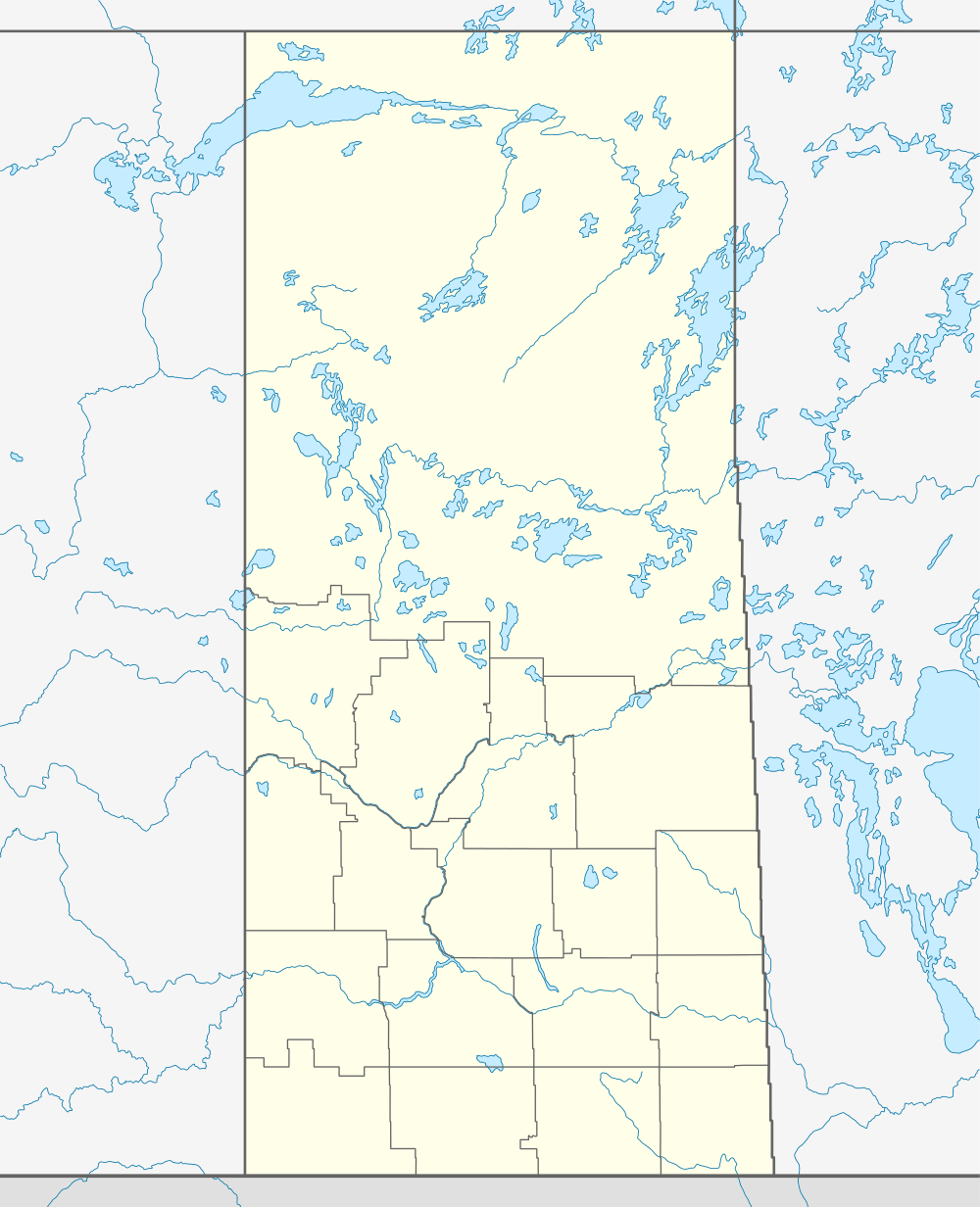Kipling, Saskatchewan
| Kipling | |
|---|---|
| Town | |
 Kipling Location of Kipling in Saskatchewan | |
| Coordinates: 50°6′5.36″N 102°37′56.64″W / 50.1014889°N 102.6324000°W | |
| Country | Canada |
| Province | Saskatchewan |
| District | Kingsley Municipality |
| Population | |
| • Total | 1,140 |
| Time zone | Central (CST) (UTC−6) |
| Website | http://www.townofkipling.ca/ |
Kipling is a town in southeast Saskatchewan, Canada. In provincial politics, Kipling is in the constituency of Moosomin. The town was named after the English author Rudyard Kipling.[1]
History
On many early maps, Kipling bears the name "Kipling Station"; it was a divisional point on the Canadian National Railway line, and the community grew in a more substantial way after the arrival of the railway in 1907–08. The main initial settlement in the Kipling area had taken place in the 1890s and the first two decades of the twentieth century. One of Canada's largest Hungarian settlements formed in the Bekevar District. The central point of that community was the Bekevar church, the architectural design of which was inspired by the Great Church in Debrecen, Hungary; this church, constructed in 1911–12, still stands, and has been designated a Municipal Heritage Property. The first residents settled in the Bekevar district in 1900. In other districts around Kipling, settlers from various European countries made their homes. There was a very sizable German-speaking community (mainly consisting of families who had come from the Russian Empire, and who named their district "Edenland"); in other districts the most significant ethnic groups were the Scandinavians (concentrated around the Neelby School District) and the British.
In the past decades, many Saskatchewan towns and villages have shrunk or disappeared, but Kipling has defied this pattern, although it did suffer a considerable decline during the 1930s. While the number of rural residents in the surrounding districts has dropped very noticeably, the population of the town itself has now gradually increased, and is served by a substantial number of vibrant business enterprises. Kipling attained the status of a town on January 1, 1954, and serves a large trading area.
A very significant development related to the livestock industry has been the creation of several large hog operations in recent years, and Kipling has become the headquarters for one of the world’s leading companies which is conducting research on swine genetics.
Kipling sites which can be classed as 'heritage properties' include the former CN station, built in 1908–09, and the Kingsley rural municipality office, built in 1919. In addition, a major and highly interesting group of pioneer-era buildings can be viewed on the spacious sites belonging to the Kipling and District Historical Society Museum. The Kipling and District Museum (1903–59) is a Municipal Heritage Property on the Canadian Register of Historic Places.[2]
Government
There is a town council whose members as of December 2011 were Mayor Patricia Jackson, elected via by-election in late November 2011, and aldermen Terry Barath, Kevin Kish, Wayne Huzina, Max Krescy, Duane Leicht, and Darren Szakacs.
As of 2011 Kipling is within the provincial constituency of Moosomin, and is represented in the Legislative Assembly of Saskatchewan by Don Toth of the Saskatchewan Party.
Federally, Kipling is in the riding of Souris-Moose Mountain, and is represented in the 41st parliament by The Honourable Ed Komarnicki, of the Conservative Party of Canada.
Climate
| Climate data for Kipling | |||||||||||||
|---|---|---|---|---|---|---|---|---|---|---|---|---|---|
| Month | Jan | Feb | Mar | Apr | May | Jun | Jul | Aug | Sep | Oct | Nov | Dec | Year |
| Record high °C (°F) | 6.7 (44.1) |
11 (52) |
20.6 (69.1) |
31.7 (89.1) |
36.7 (98.1) |
36.7 (98.1) |
38 (100) |
38.3 (100.9) |
35 (95) |
31 (88) |
21.7 (71.1) |
9.5 (49.1) |
38.3 (100.9) |
| Average high °C (°F) | −11 (12) |
−7.1 (19.2) |
−0.5 (31.1) |
9.5 (49.1) |
17.5 (63.5) |
22 (72) |
24.5 (76.1) |
23.4 (74.1) |
17.2 (63) |
9.9 (49.8) |
−1.2 (29.8) |
−8.6 (16.5) |
8 (46) |
| Daily mean °C (°F) | −16.5 (2.3) |
−12.5 (9.5) |
−6 (21) |
3.3 (37.9) |
10.9 (51.6) |
15.6 (60.1) |
18 (64) |
16.6 (61.9) |
10.7 (51.3) |
3.9 (39) |
−5.9 (21.4) |
−13.7 (7.3) |
2 (36) |
| Average low °C (°F) | −21.9 (−7.4) |
−17.7 (0.1) |
−11.4 (11.5) |
−2.9 (26.8) |
4.3 (39.7) |
9.2 (48.6) |
11.3 (52.3) |
9.8 (49.6) |
4.2 (39.6) |
−2 (28) |
−10.5 (13.1) |
−18.6 (−1.5) |
−3.9 (25) |
| Record low °C (°F) | −44.4 (−47.9) |
−41.7 (−43.1) |
−40 (−40) |
−26.7 (−16.1) |
−12.8 (9) |
−3.3 (26.1) |
1.7 (35.1) |
−2 (28) |
−8.9 (16) |
−23 (−9) |
−34.4 (−29.9) |
−43 (−45) |
−44.4 (−47.9) |
| Average precipitation mm (inches) | 20.4 (0.803) |
17.5 (0.689) |
25.3 (0.996) |
28.2 (1.11) |
53.4 (2.102) |
75.3 (2.965) |
65.4 (2.575) |
60.4 (2.378) |
46.4 (1.827) |
27.4 (1.079) |
17.8 (0.701) |
23.9 (0.941) |
461.3 (18.161) |
| Source: Environment Canada[3] | |||||||||||||
References
- ↑ Town of Kipling » About the Town
- ↑ "Kipling and District Historical Museum". Canadian Register of Historic Places. Parks Canada. Retrieved 2011-03-29.
- ↑ Environment Canada Canadian Climate Normals 1971–2000, accessed 4 August 2010
Other sources
- The Unforgiving Minute – A Life of Rudyard Kipling Harry Ricketts, Pimlico, 2000 ISBN 0-7126-6471-8
- What was he doing out?- The Province, Page A8, Vancouver BC Brett Popplewell, Canadian Press, August 3, 2006
External links
Coordinates: 50°6′5.3634″N 102°37′56.64″W / 50.101489833°N 102.6324000°W